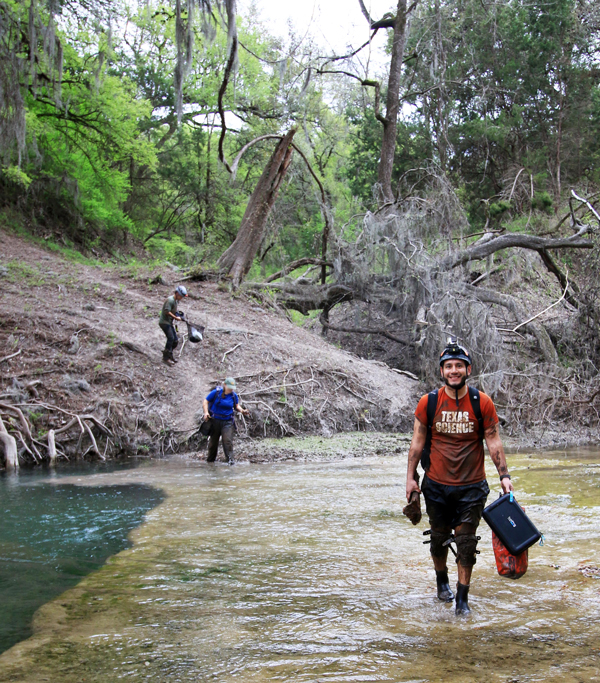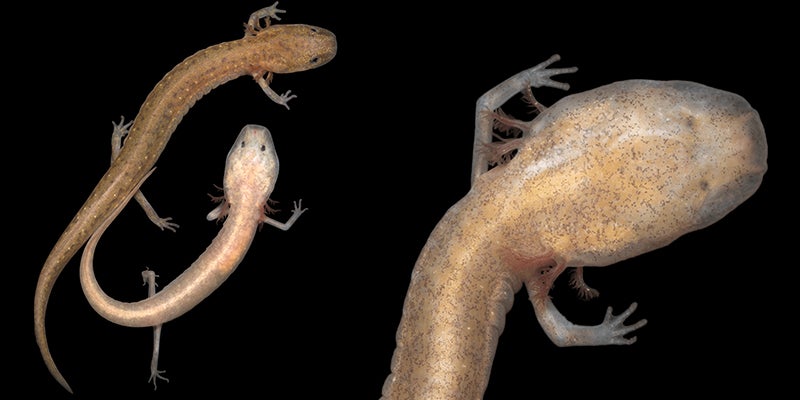IB Researchers to Lead Three-Year Groundwater Salamander Survey

Undescribed species from New Braunfels. (Photo: Tom Devitt)
Pale-skinned predators swimming about in dark underground caves sounds like something from a horror film, but they do exist. The reality is probably much less frightening once you know these creatures are groundwater salamanders of the Eurycea genus. Members of David Hillis’ lab in the Department of Integrative Biology have received support from the Texas Comptroller’s Office to survey them for the upcoming three years.
The salamanders of their focus are quite mysterious. Their habitat in dark underground water systems makes them a challenge to study. Some of the spaces are just too hard for a human being to fit. However, salamanders do things that make studying them possible, things like giving birth, defecating, or just bumping into rocks. All these processes cause the salamanders to shed DNA that can be collected and sampled.

Ruben Tovar in the field. (Photo: Brittney White)
Ruben Tovar, graduate student, and Tom Devitt, Research Scientist, are part of the research team that will be collecting salamander DNA as part of the three-year survey. They will sample water from sources where salamanders might be living. Then, they will take the water back to the lab and test it using particular primers and molecular techniques that allow them to identify DNA associated with a specific species.
The survey results will be beneficial in revealing where exactly these salamander species live and understanding their distribution in more detail. Currently, what researchers do know is that the Eurycea clade distribution is along the Edwards Plateau in Central Texas. This range is bounded by the Balcones Fault from the south to the east, the Llano Estacado and Llano Uplift to the north, and the Pecos River and Chihuahuan Desert to the west.
However, not every water source of this region might have salamanders. Because of their enigmatic nature, sometimes luck is the only way a researcher will actually see one. But by sampling the water for DNA, researchers have a much easier way to tell if that water source is indeed inhabited or not.

Left: Cascade Caverns salamanders (Eurycea latitans) from Honey Creek Cave. Right: possibly Cascade Caverns salamander from Preserve Cave. (Photos: Tom Devitt)
Communities outside of UT will also be involved in the survey. The project team will be reaching out to landowners for access to water sources and subcontracting some fieldwork to collaborators including the San Antonio Zoo.
A deeper understanding of groundwater salamanders and the fragile ecosystems they inhabit contributes significantly to conservation efforts. Many of the currently-known species of salamanders have only been recently discovered, and are endangered. Knowledge of species diversity and their distributions is necessary in protecting them, and the water sources that they and millions of Texans depend on.



